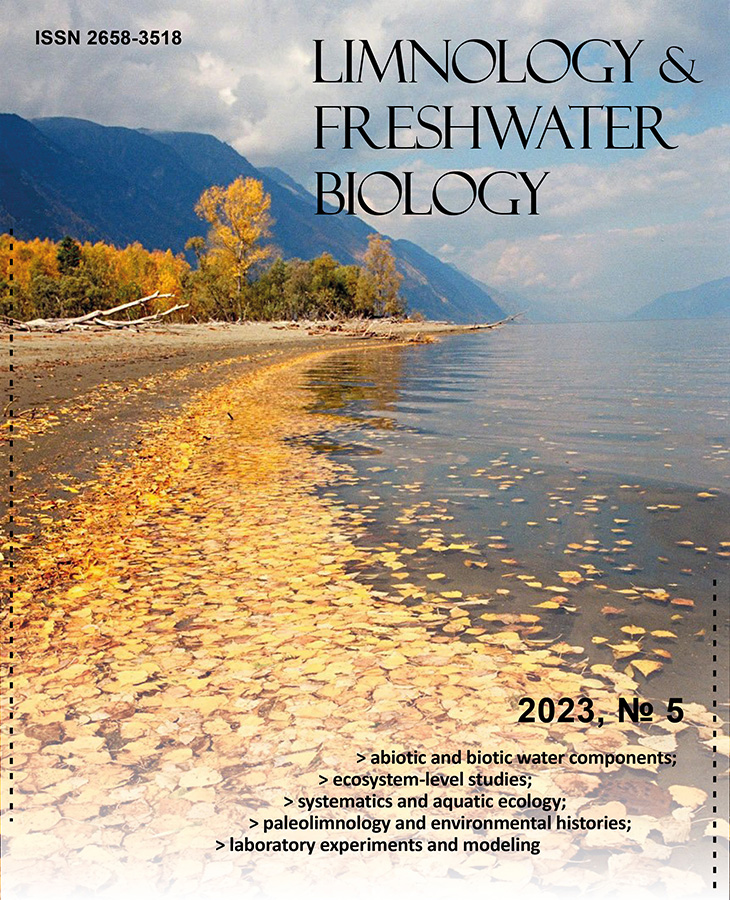No 5 (2023)
Articles
Assessing the potential of a surface water body for multiple uses. Case study: the Anambra River Basin, south-eastern Nigeria
Abstract
Anthropogenic activities causing deterioration in water quality and a decrease in meeting the ecosystem service potentials of surface water are considered one of the major basic environmental challenges. Water samples were collected from three sampling stations (Ogurugu, Otuocha, and Otu- Nsugbe) in the Anambra River Basin and analyzed following standard protocols and procedures for nine months. The cosystem services potentials of the Anambra River Basin were evaluated using physico-chemical parameters and some indices: Comprehensive pollution index (CPI), nutrient pollution index (NPI), salinity potential, and soluble sodium percentage (SSP). All the water quality parameters were within the standard level for drinking water, aquaculture practice, recreation (swimming/bathing) and agricultural purposes, with the exception of pH and phosphate, whereas dissolved oxygen met aquaculture criteria only in station II. Comprehensive pollution index (0.150 – 0.449), nutrient pollution index (0.07 – 0.46), and soluble sodium percentage (6.0% -26.92%) were within the category of non-polluted or excellent to sub-clean. Potential salinity (39.39 - 97.19) was high, indicating water from the Anambra River Basin contained crystallized solutes. Conclusion: the Anambra River Basin is not at risk of eutrophication but may not support irrigation program due to the high potential salinity. However, the river needs to be monitored, and anthropogenic activities need to be regulated.
 137-144
137-144


Sanitary-microbiological characteristics of water in the area of the Zmeinyi thermal spring (Northern Baikal, Russia, 2022)
Abstract
The analysis of sanitary-significant microorganisms in two baths of the thermal spring Zmeinyi, the streams of the baths and at a distance of 5 and 20 meters from the shore was carried out during the day before and the day after tourists’ bathing. Exceedance of permissible values of sanitary-microbiological indicators in accordance with SanPiN 1.2.3685-21 were detected in the baths, streams of outflow and in the water edge at a distance of up to 5 meters. The indicator of total (generalized) coliform bacteria (TCB) in all studied samples did not decrease throughout the day, the highest values of the number of opportunistic microorganisms were observed in the baths of the thermal spring and in the streams of outflow, where the water temperature was ~ 32 - 33°С. The obtained self-cleaning coefficients in the littoral zone up to 20 m had low values (from 0.0008 to 2.53).
 145-155
145-155


Water bears in the land of diversity: a comprehensive review of tardigrades in India
Abstract
Tardigrades, also known as water bears, are a group of microscopic invertebrates with four pairs of stout legs. They are known to be found in freshwater, terrestrial and marine environments. An exceptional feature of the tardigrades is their ability to withstand extreme low temperatures, desiccation and other such severe environmental conditions. Globally, 70.8% of the earth is covered with the oceans and seas, while the Indian Ocean accounts for 29% of the global ocean area and is known to be a region of high biodiversity, where India is one of the countries. Tardigrades are known to form a habitat with mosses, lichens, freshwater ecosystems, oceans, and Himalayas in India. One of the main areas of research on tardigrades in India is the diversity and distribution of tardigrade species in different regions of the country, however, very few studies have been conducted on this phylum. Tardigrades have become the subject of increasing interest due to their potential economic importance like their significance in environmental monitoring and space research. Lastly, this phylum needs to be explored in terms of the species distribution and their economic importance, making them a valuable resource for India.
 156-163
156-163











